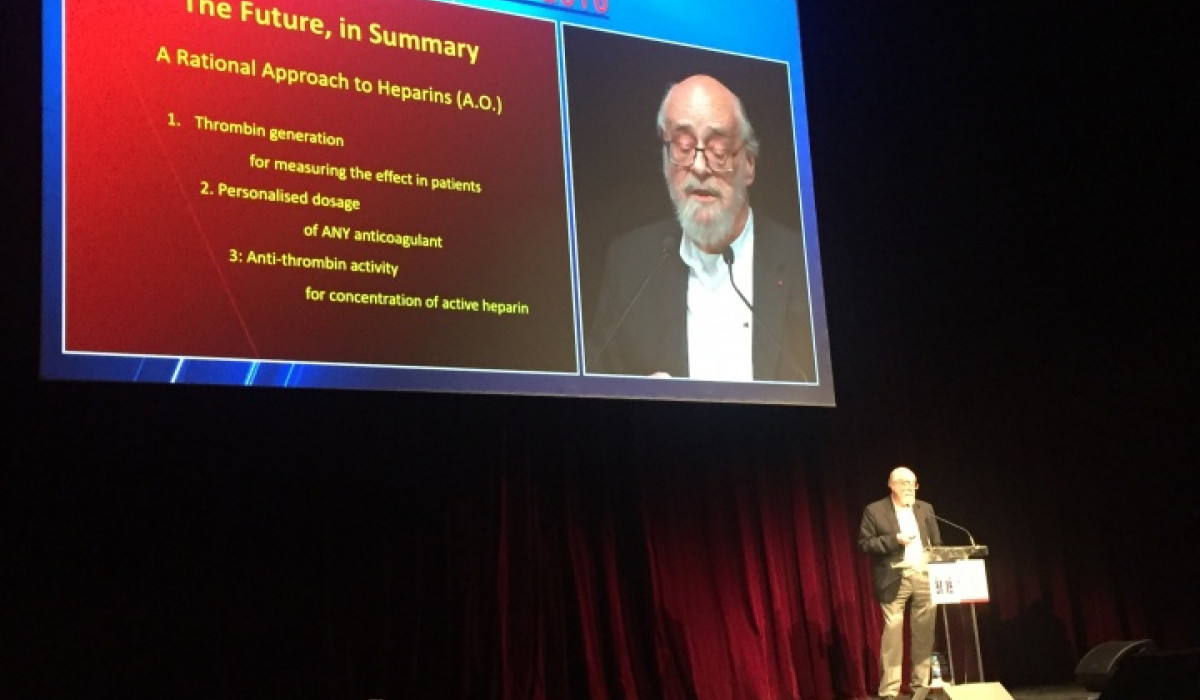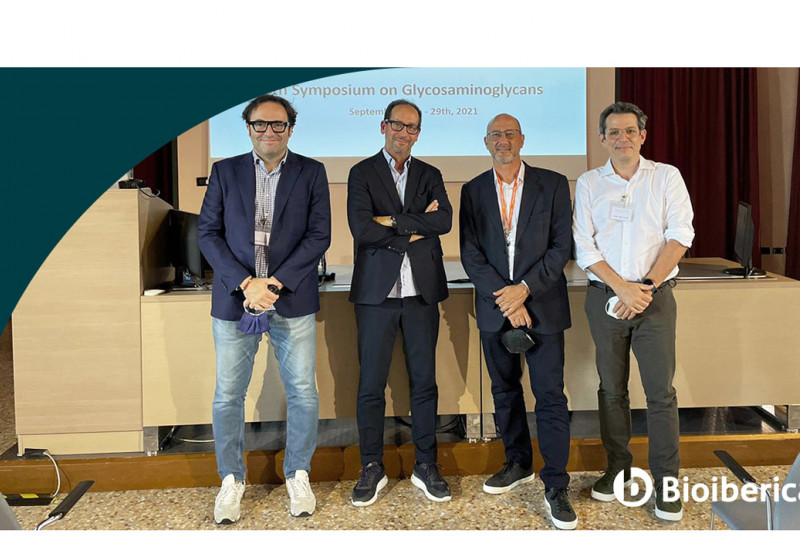“Future Heparin Treatment to include administering personalised dose to further improve its efficacy and security”
- Recent studies show that there is no standard response to Heparin treatment and that it must be adapted for each individual
- There is a correlation between the response to Heparin and thrombin formation in each individual. Researchers have also observed that with greater thrombin production there is a greater risk of thrombosis
- Heparin is the most commonly used anti-coagulant in thrombosis prevention and treatment. One out of every 4 people in the world die due to causes related with this disease
- These are the principal conclusions presented by Professor Coen Hemker in the conference dedicated to the “The Past, The Present and The Future of Heparin”, to celebrate the Centenary of its Discovery

Heparin is the most commonly used medication in thrombosis prevention and treatment. Heparin is on the World Health Organisation's list of essential medicines and, according to calculations, it saves more than 100 million lives every year. Additionally, recent studies show that there is no standard response to Heparin treatment and that it must be adapted for each patient to further improve its efficacy and security.
“We have been able to confirm via plasma analysis that there are individuals for whom Heparin has little effect and others who have an excessive response to it”, declares Professor Coen Hemker, biochemist and Professor Emeritus of Maastricht University, who adds: “This variation in the response to Heparin is due to a variation that exists in the amount of thrombin that each individual generates”. Thrombin is a blood protein which, on the one hand, activates the cells which form thrombi (platelets) and on the other, makes blood coagulate, as such it is a determining factor in balancing thrombosis and bleeding. In fact, researchers have shown that with greater thrombin production there is a greater risk of thrombosis.
For this reason, Professor Hemker emphasises the need to administer the dose of this medicine in a personalised manner: “Heparin is a hundred-year old medication with a solid scientific base with highly proven efficacy and security. But if its administration were personalised based on each patient's thrombin production, its effect and security profile would be even further improved”.
This is the main conclusion of the masterful conference that Professor Hemker gave during the Annual Meeting of the International Society on Thrombosis and Haemostasis (ISTH) taking place in Montpellier (France), dedicated to “The Past, The Present and The Future of Heparin”, to celebrate the Centenary of its Discovery. The session has around 1,000 attendees and with the collaboration of Bioibérica.
“There are very few medications discovered a hundred years ago which are still in widespread clinical use. We can also confirm that Heparin is a medicine with a future because, apart from its anti-coagulant activity, new applications are being investigated in illnesses which have an important inflammatory component”, explains Professor Hemker.
Heparin is the most commonly used anti-coagulant in thrombosis prevention and treatment. According to data by the International Society on Thrombosis and Haemostasis, 1 out of every 4 people in the world die due to causes related with this illness which already causes more annual deaths than AIDS, breast cancer and traffic accidents combined. Specifically, venous thromboembolic disease is the second leading cause of death in cancer patients and third in vascular diseases.
Principal milestones in the history of Heparin:
- 1916: Jay McLean (Baltimore, United States) discovers a phospholipid with anti-coagulant properties, isolated from a canine liver.
- 1918: William H. Howell (Baltimore, United States) manages to isolate another water soluble anti-coagulant polysaccharide which he called "Heparin".
- 1939: Heparin is approved as a medicine in the United States.
- 1950: Heparin is in widespread use in daily clinical practice.
- 1976: Low-molecular-weight Heparin is created.
- 1985: Clinical trials are performed with low-molecular-weight Heparin.
- 1996: Start of home treatment with low-molecular-weight Heparin.
About Professor Hemker
Professor Hemker is a Board Member of the Cardiovascular Research Institute in Maastricht (the Netherlands) and Professor emeritus of Internal Medicine in the Mount Sinai Medical School, New York. He has dedicated many years to teaching and research, having served as Full Professor and Chancellor of Maastricht University. He has published more than 400 research papers on Haemostasis and Thrombosis and has been the chief editor of Haemostasis for more than 20 years. Throughout his professional career he has received numerous prizes and awards. Among others, Professor Hemker is a member of the Dutch, French and European Academy of Medicine; a Knight in the French Legion of Honour and a Knight of the order of "Nederlandse Leeuw" (Royal distinction, The Netherlands).
Related News
A crucial initiative to prevent shortages of critical medicines in the European Union.
The 28th Symposium on Glycosaminoglycans, an internationally renowned scientific event focusing on glycosaminoglycans, will be sponsored by
- Bioiberica produces 20% of the world's Heparin API.
- Heparin saves around a hundred million lives every year.
- One out of every 5 doses of heparin administered in the world comes from Bioiberica.


